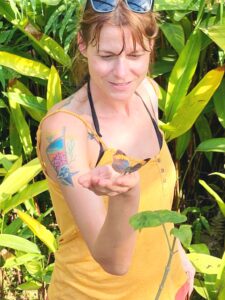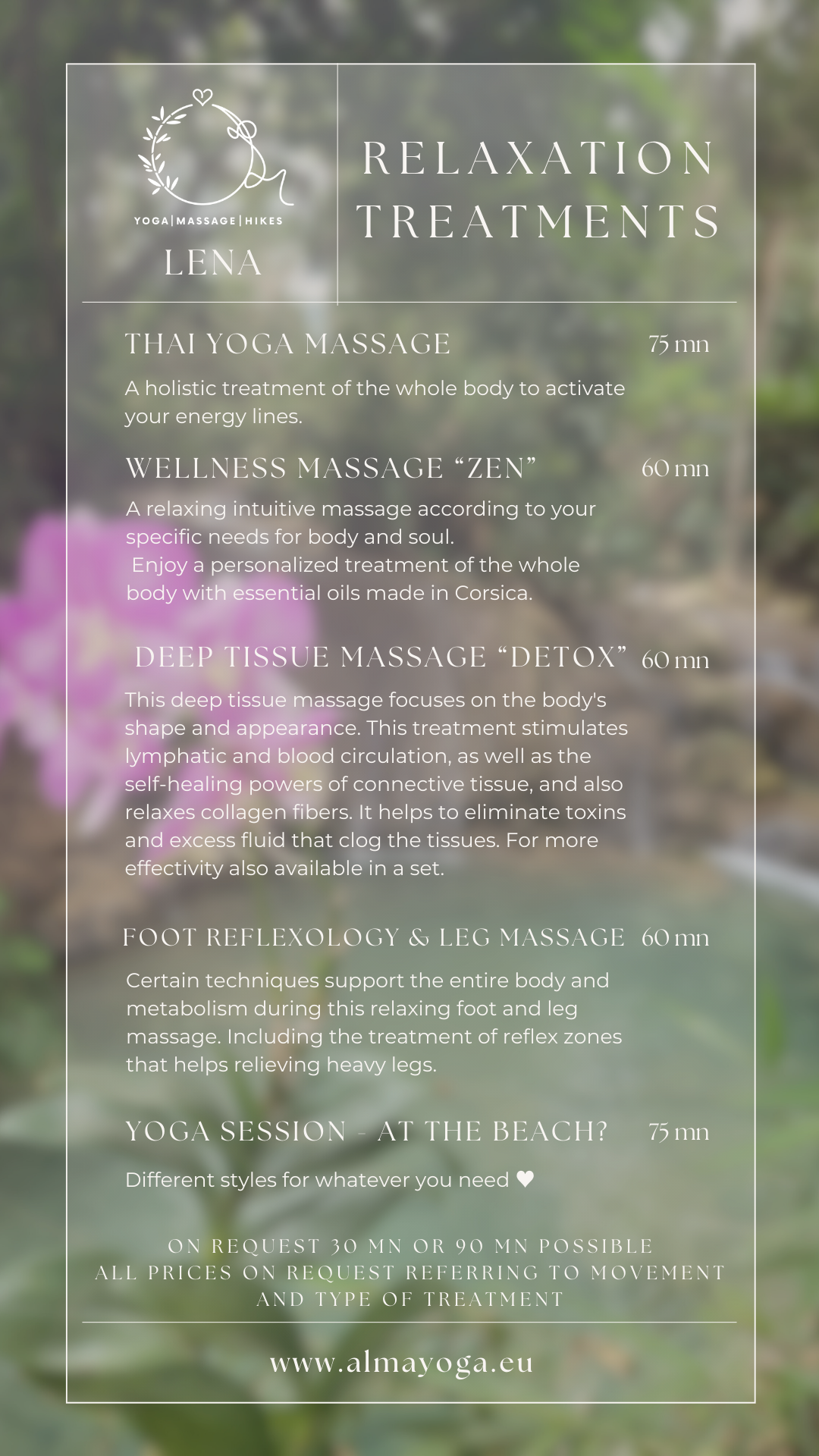Thai Yoga Massage
n February this year I traveled to Laos and Thailand to learn this wonderful dance of the body, Thai Yoga Massage or Osteothai Massage for a total of 6 weeks in the jungle and in Chiang Mai, the origin of classical Thai massage.
Classic Thai massage has its origins in Asia and is known as “Nuad Phaen Thai Boran“, which translates as “healing touch”. However, elements from yoga point to an Indian origin. Ajan Pichet, my teacher’s master at the Thai Massage Circus in Laos, popularized Osto-Thai massage in the West and adapted traditional Thai massage.
It is a holistic treatment with preventative potential for a healthy lifestyle.
When used regularly, the exercises have a positive effect on the musculoskeletal system and posture. The flexion and extension of the spine during the massage temporarily improves physical mobility. The different positions and postures also support the lymph flow in the body.
Various techniques are systematically applied throughout the body.
Stretching exercises mobilize the body completely and bring movement to all parts of the body, helping to increase overall regeneration as they consume a lot of oxygen by absorbing new energy. Using acupressure and gentle twisting and stretching movements, blockages are released and well-being is restored. Typically, fascia, tendons, muscles and joints are treated along the 10 major energy lines in the body. The so-called marma pressure points, known from Shiatzu for example, are located on these energy lines. According to ancient teachings, these points are responsible for supplying the body with life energy “prana”. The pressure point massage improves blood circulation in the treated areas of the body, making it easier to supply the cells with new nutrients and remove waste products from cellular respiration.
I use my body (weight) to help you perform passive stretching exercises and yoga poses, from which Thai massage is derived. I use my hands, elbows, forearms and feet to release tension in the muscles and get the energy channels flowing through movement.
Your flexibility depends on the function of the joints. If the flexibility of the tendons is increased, the range of motion also increases. Twist poses are also used. They help to mobilize the spine and lubricate the joints in the spine.
My most important tool in this holistic treatment is Metta (Sanskrit = loving kindness and friendliness from Buddhism) ♥

butterfly – love – transformation
Contraindications:
Heart and vascular diseases
Muscle and bone injuries
Inflammations
Fever
Open wounds
Suitable for:
General restrictions of the musculoskeletal system
Headaches, knee and back pain
Stress-related strain or tension
Digestive problems
Sleep disorders
Dizziness and ringing in the ears
Cough
Promotes:
The blood circulation
Joint mobility
Increases flexibility
The drainage of tissue water (lymph)
Activation of the parasympathetic nervous system: relaxation and health-promoting effect of the organs
In Thailand, massage is also used to treat serious illnesses such as multiple sclerosis, Parkinson’s disease, strokes and other symptoms of paralysis. In Thailand, it is even practiced in hospitals and is said to support the regeneration of patients.
Important: No pain should be felt!
Duration60 or 90 minutes (90 minutes is recommended as it is a holistic treatment)
It takes place clothed on the floor on a thin mat (please wear comfortable, loose clothing).
Mobile also possible. Please note the news where I am currently traveling.








